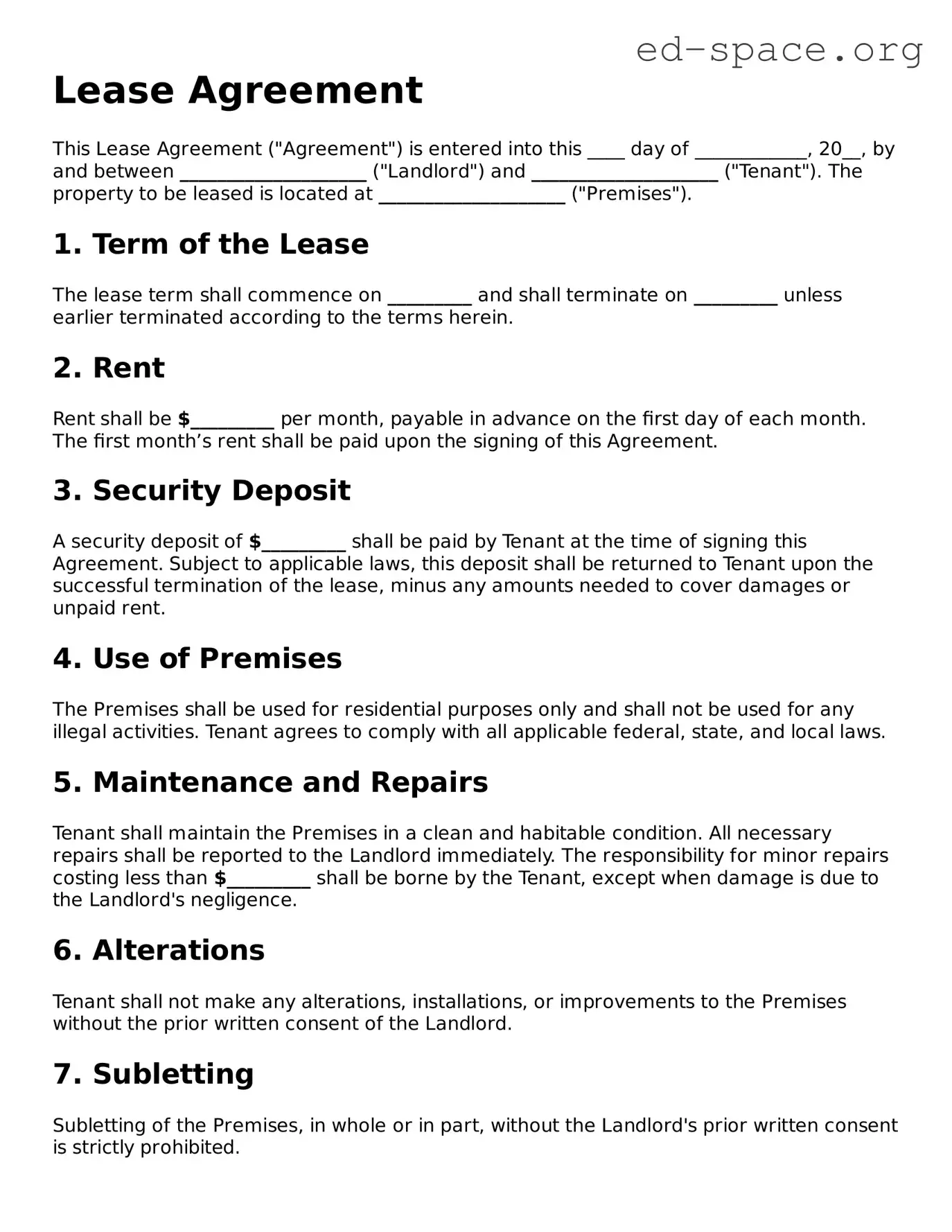Lease Agreement
This Lease Agreement ("Agreement") is entered into this ____ day of ____________, 20__, by and between ____________________ ("Landlord") and ____________________ ("Tenant"). The property to be leased is located at ____________________ ("Premises").
1. Term of the Lease
The lease term shall commence on _________ and shall terminate on _________ unless earlier terminated according to the terms herein.
2. Rent
Rent shall be $_________ per month, payable in advance on the first day of each month. The first month’s rent shall be paid upon the signing of this Agreement.
3. Security Deposit
A security deposit of $_________ shall be paid by Tenant at the time of signing this Agreement. Subject to applicable laws, this deposit shall be returned to Tenant upon the successful termination of the lease, minus any amounts needed to cover damages or unpaid rent.
4. Use of Premises
The Premises shall be used for residential purposes only and shall not be used for any illegal activities. Tenant agrees to comply with all applicable federal, state, and local laws.
5. Maintenance and Repairs
Tenant shall maintain the Premises in a clean and habitable condition. All necessary repairs shall be reported to the Landlord immediately. The responsibility for minor repairs costing less than $_________ shall be borne by the Tenant, except when damage is due to the Landlord's negligence.
6. Alterations
Tenant shall not make any alterations, installations, or improvements to the Premises without the prior written consent of the Landlord.
7. Subletting
Subletting of the Premises, in whole or in part, without the Landlord's prior written consent is strictly prohibited.
8. Pets
Pets are ☐ allowed ☐ not allowed on the Premises. If allowed, a non-refundable pet deposit of $_________ shall be required.
9. Governing Law
This Agreement shall be governed by and construed in accordance with the laws of the State of ______________, without giving effect to any choice of law or conflict of law provisions.
10. Entire Agreement
This Agreement constitutes the entire agreement between the parties and supersedes all prior understandings, agreements, or representations by or between the parties, written or oral, to the extent they relate in any way to the subject matter hereof.
Signatures
By signing below, the Landlord and Tenant agree to the terms and conditions of this Lease Agreement.
Landlord's Signature: _____________________________ Date: ________
Tenant's Signature: _____________________________ Date: ________
